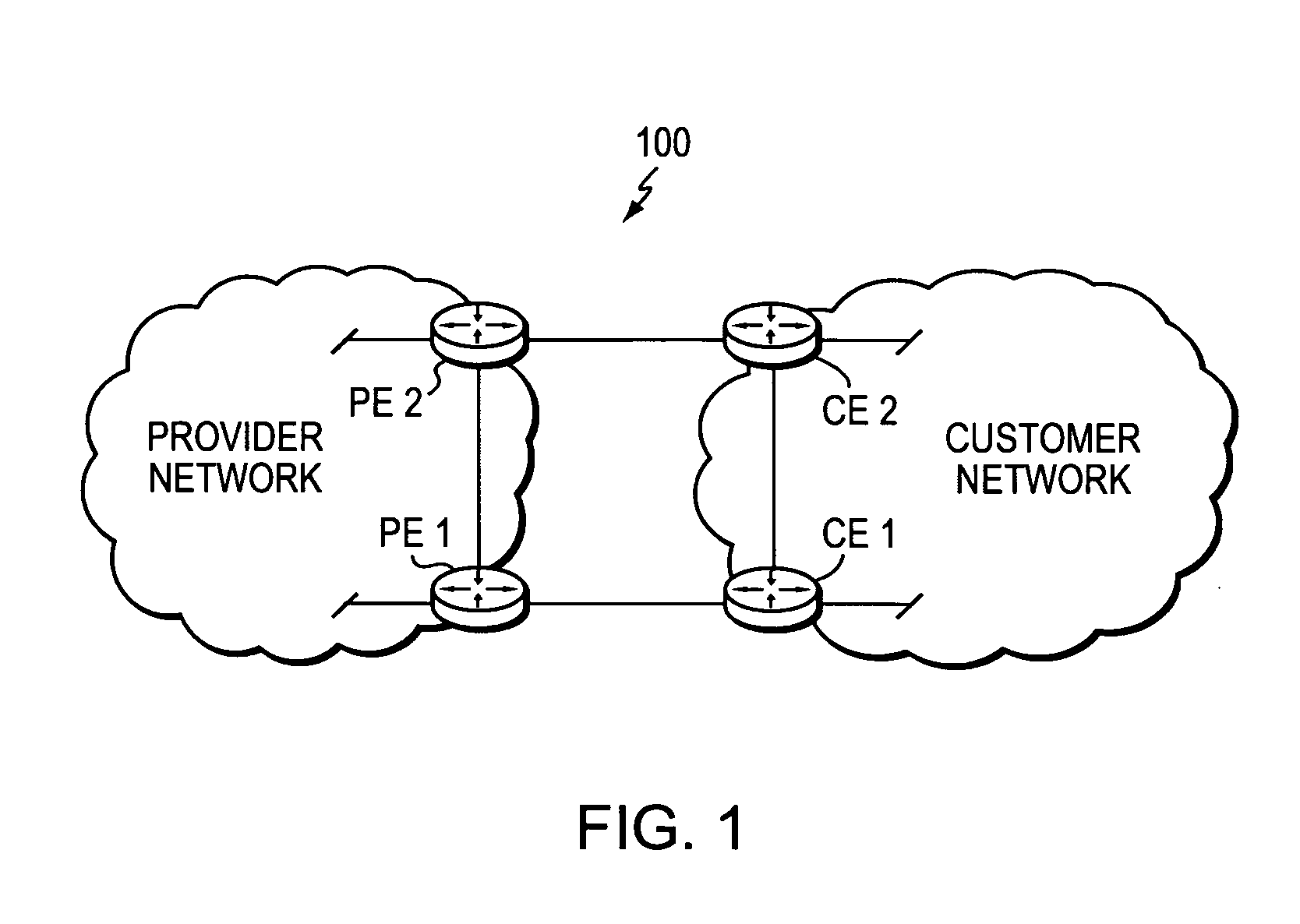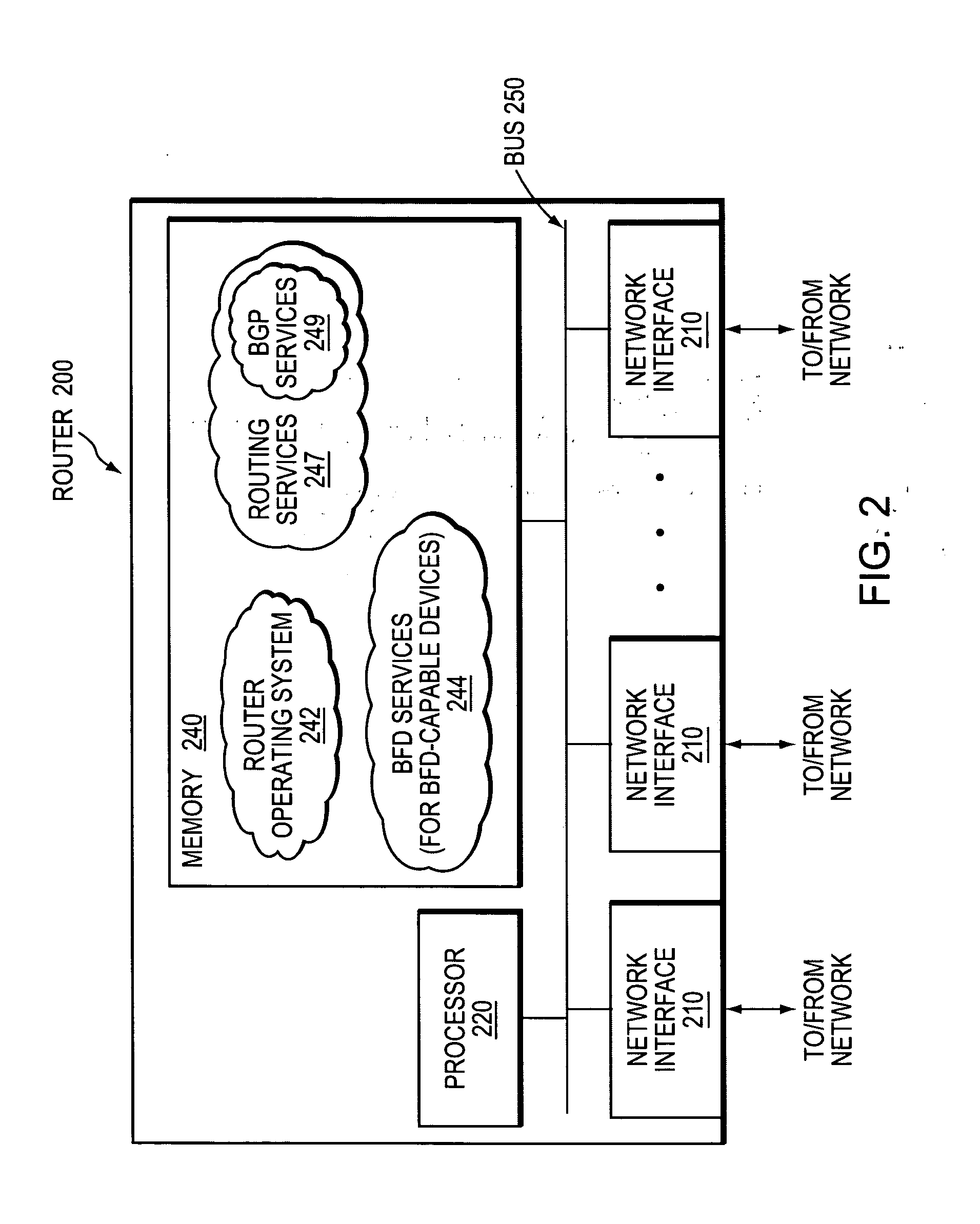Technique for enabling bidirectional forwarding detection between edge devices in a computer network
a computer network and edge device technology, applied in the field of computer networks, can solve problems such as breaking the ebgp session, and achieve the effect of saving time and money for network administrators
- Summary
- Abstract
- Description
- Claims
- Application Information
AI Technical Summary
Benefits of technology
Problems solved by technology
Method used
Image
Examples
Embodiment Construction
[0033]FIG. 1 is a schematic block diagram of an exemplary computer network 100 comprising a provider network, (e.g., a service provider network) interconnected to one or more customer networks. Although the provider and customer networks are described illustratively herein as autonomous systems, those skilled in the art will appreciate that they may be configured as one or more routing domains or other networks or subnetworks. The provider network comprises one or more network nodes, including a set of communicating border nodes or routers (illustratively, provider edge devices, or “PE devices”) PE1 and PE2, through which client communications, such as data packet traffic, can pass into and out of the provider network. The customer network also comprises one or more network nodes, including a set of communicating border nodes or routers (illustratively, customer edge devices, or “CE devices”) CE1 and CE2, through which client communications can pass into and out of the customer netw...
PUM
 Login to View More
Login to View More Abstract
Description
Claims
Application Information
 Login to View More
Login to View More - R&D
- Intellectual Property
- Life Sciences
- Materials
- Tech Scout
- Unparalleled Data Quality
- Higher Quality Content
- 60% Fewer Hallucinations
Browse by: Latest US Patents, China's latest patents, Technical Efficacy Thesaurus, Application Domain, Technology Topic, Popular Technical Reports.
© 2025 PatSnap. All rights reserved.Legal|Privacy policy|Modern Slavery Act Transparency Statement|Sitemap|About US| Contact US: help@patsnap.com



